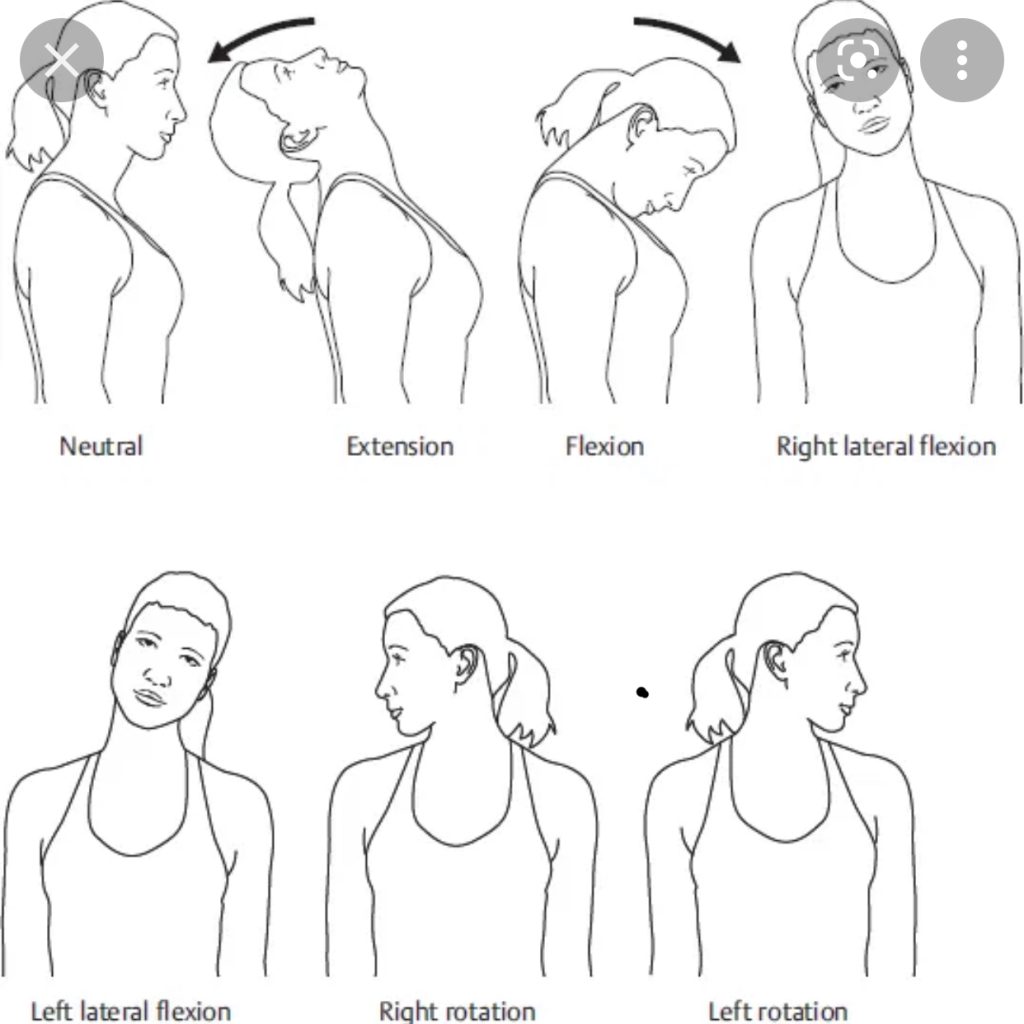Massage for Kids
Children respond differently to massage therapy than adults do. As a grown person is typically stressed from responsibilities, we use massage as a way to lower stress and the muscle tension built from it. In turn when parents schedule a professional massage session for their child, they’re expecting that their child will lay perfectly still. Often times they feel embarrassed as to why children seem to fidget and move during a massage session and assume they cannot benefit from it. However, to compare the behavior of a child to an adult, even in a relaxing setting can be a mistake.
The Future of Massage Therapy
In a world where the digital realm rules more each day the absence of physical touch is growing. With the arrival of the meta verse (a virtual universe where humans will interact) the component of receiving professional services through human touch will change drastically. Even today among family units, the temptation for parents and children to log on and ignore others living under the same roof is high.
Dopamine Rush
One of the benefits of massage is the slow rise in dopamine levels, a neurotransmitter that sends signals through your body and helps you feel pleasure. In contrast, the dopamine spikes that occur when your child receives a like on social media is instant and continuous. Their body was not meant to operate in that way sustainably. I am not against social media but am using it as an example as a common habit. “Natural highs” are social acceptable and include experiences such as eating food, exercise and hugs also raise dopamine levels and are considered positive experiences. So is sitting by the ocean, being outside and playing. However, children’s brains are naturally more susceptible to addiction and current reactions to technology being removed as a form of punishment are leaving parents concerned. The question to ask is where is my child receiving their feel good sensations, at what frequency and what is the conduit and intention behind it?
Visual vs. Sensory Receptors
A child’s brain receives information from their world. Below, I’ve highlighted the sensory receptor most impacted by massage therapy. The seven sensory receptors include
- Sight (Vision)
- Hearing (Auditory)
- Smell (Olfactory)
- Taste (Gustatory)
- Touch (Tactile)
- Vestibular (Movement): the movement and balance sense, which gives us information about where our head and body are in space.
We can trick the brain into believing we are being touched and produce the increase. However, the tactile sensory nerves on the skin will not send the message to the muscles, nerves and the brain. The conduction of that pathway will be minimized or lost completely and the ramifications of that towards human health are recorded to be negative. The stimulation of the nervous system through touch is part of the human experience that cannot be replaced by robots because of the spirit of a human. The invisible but palpable force that is transmitted from one living thing to the another through physical touch. It is the sensation of “feeling loved” or “feeling cared for”. It is the reason the rise of emotional need animals within our lives. With the development of technology, our kids will come close to experiencing what a massage in the virtual world may feel like. High end resorts will mimic a vacation with amenities, activities and shows. Spa days may take on lounging by the sea and watching the sunset. Getting a massage could be stimulated coupled with robot technology at home but the once again, the human element of touch will be gone.
Careers in Touch
Personal services by a human will fall under the two ends of the spectrum, obsolete or a high commodity. Careers as massage therapists may be start to decline or become more lucrative. The 2021 the global wellness industry, including spiritual self-care, has grown to $4 trillion. So, I’m shooting I’m speculating the demand increasing. The nature of economics the more rare it is to find a professional in something the higher the price. Health insurance companies may find it beneficial to increase their offerings by partnering with health providers that offer natural therapies. Exposing many more to massage therapy and elevating the profession as well as the bureaucracy. Lastly, tech workers may search for a part time career to supplement their need for human engagement in a meaningful way. According to the U.S. Department of Labor, Massage Therapy has one of the highest job satisfaction levels and job growth from 2020-2030.
Social Isolation
Our children may enter the workforce working remotely. While there is a freedom in not physically commuting, social isolation is a consequence if you’re child chooses to live alone or doesn’t seek positive human interaction intentionally. Technology careers offer lucrative salaries but poor work life balance. Regular massage therapy is one element in the wheel of holistic healthcare that help children learn the benefits of physical touch and the need for it in their lives. In turn, this may reduce symptoms of depression, anxiety and suicidal tendencies. The craving of human touch is always there, massage therapy is one way to help nurture it.
Understanding High Energy
Children have energy and lots of it. Often times as adults we wish we had a third of that coveted surge of willingness to move but we simply don’t. Our bodies slow down as we age and that is simply the natural course of human life. As a child, we’re eager to explore, discover and get our hands onto as many new experiences as we can find. For some adults, the idea of a child receiving massage may seem frivolous. After all, we didn’t receive massage when we were children! But ask yourself this question: how comfortable did you feel the first time you received a massage as an adult? Awkward? Nervous? Until you began to relax at the hands of a competent and caring practitioner and not only feel good but also felt the long term results in your health.
I believe the mistake our society makes is not teaching children the importance of managing stress at a young age. A child’s formative years are when the greatest impressions are made, both positive and negative. Why wait until they’re older to understand, experience and use massage therapy into their lives? As children grow into early teenage years, changes in their body create a sense of awkwardness that is difficult to be avoided. However, the current educational system in place rarely discusses our bodies in the way of caring for them. Our children may study human anatomy very superficially but not preventive care and healthy habits. Then, with little to no guidance during childhood; as adults, they’re are magically expected to know and practice ideas that are foreign to them such as eating well, exercising and receiving therapeutic bodywork. Among the busy lifestyles we adopt, adults have come to believe there is rarely the chance for additional education in allowing their children to experience wellness and massage as a form of routine healthcare.
The Body’s Intuition
There is a great mind-body disconnect with adults that I experience each day. When I treat muscular conditions I also notice that most people suppress their physical pain or are unaware of it.
There has rarely been an adult that has come in to receive a professional massage that has regretted it. That is because each adult recognizes on a deep level that his/her body has been severely neglected or has built up considerable tension since their last session. Children instinctively recognize this need as well.
In India and Asia, babies and children have been accustomed to receiving massage throughout their life and as adults, it is a socially acceptable form of care. It is a culture that embraces massage as part of their well being.
There is a great epidemic in North America of the fear of touch labeled as inappropriate. Another reason is for safety against pedophiles and other serious offenders. But if a child experiences massage in a safe and professional setting, I believe that the chances of inappropriate touch will lower. The child will be able to differentiate what feels safe and what does not.
Today, families across the world are seeking and investing in wellness like never before due to the COVID19 pandemic. Massage therapy can be an added benefit in children’s lives. It is a balance, from expecting a fearful touch from strangers to a welcoming and caring touch from a healthcare professional. All for the purposes of health with a parent’s supervision.
Understanding Positive Touch
This touch, in a safe environment allows the child to build a stronger mind-body connection. They begin to develop a sense of care and responsibility towards their body. They understand what feels good and what doesn’t, what is therapeutic and beneficial and what can be harmful for them. This development shaves years off potential for an unhealthy lifestyle in the future. In addition it also creates a stronger bond with family members. Healthy touch between parent and child is a non verbal expression of love. Words don’t always need to be exchanged but when children receive massage they become more comfortable with the idea that touch is meant to help others feel better. In turn, the chances of comforting and even caring a parent, grandparents or a relative that they love and trust in the future is higher. We are speaking of a home environment that is safe, of course for the child. As an adult, you’ll be able to perceive when something is amiss and not right. Always listen to your child when they do not feel safe with another adult or in any situation.
Opioid Drug Prevention
Children should always be accompanied in the massage treatment room by parents or a trusted relative. No matter how long you have known the practitioner, there is no reason a professional could or should stay in the room alone with a child during a session. It is important that your presence represents a symbol of familiarity and safety during the massage. Again, do not be surprised if the child receiving the massage is giggling, squirming or talkative during the massage. They are learning how to be still in a setting that is not bedtime. I know of adults that struggle with this as well so be patient with your little one. The true test of the benefit of a massage for a child is the feedback they share at home. When they fall asleep or begin yawning it means the relaxation portion took place which is great. The physiological benefits are increased circulation if they are sedentary, muscular tension or pain relief. The long term benefits are an overall sense of calmness and the education of a healthy alternative from opioid drugs.
Setting The Example
Adults that receive regular massage should allow their child to sit in a session even just one time. It may seem unappealing to give up your time of relaxation to show your child that mommy/daddy also get massage but it will warm them to the idea faster. Children seek to copy everything their parents do, whether it’s good or bad, that includes recognizing habits.
Understandably, most facilities and spas will not permit children into the treatment rooms for liability reasons. Also, some paying customers visiting the same place might find the child’s presence obtrusive and not relaxing. Some of these establishments have these rules in places for a purpose and we must respect them. However, not all places share these policies and are more family friendly than others. If permitted, allow your child to watch a session if they are able to. If you don’t wish them in the room the entire massage simply show them in the room and say, “OK mommy/daddy is now getting ready for her massage!” Said with a confident and relaxed smile and explaining to your child that this is a time for mommy/daddy to take care of their body and also relax. This will help the child anticipate their own massage in the future. This will give them a sense of confidence that therapeutic bodywork is something to look forward to feel awkward or misconstrued as something else.
Healthy Future Relationships
Lastly, I believe massage for kids has the power to improve future relationships. As your children grow into adulthood and seek romantic relationships, it is healthy for them to understand that touch cannot or does not always lead to sexual intimacy. This is a problem many men face in their romantic relationships. Women are often emotional beings that enjoy being nurtured through a caring touch that does not always lead down that road. But how can we help young boys be sensitive to this? Learning about and experiencing therapeutic massage as a child allows him to understand that touch is also a selfless medium for empathy and should be conducted with respect.
In conclusion, there are many deep layers in the human mind and the psychology of children that continue to be explored. Therapeutic bodywork must be experienced to be understood. No one can deny that children learn best through experience as they were designed to do. As caretakers and parents, I hope that you can find practitioners and instructors in your community that enjoy caring for children and teaching them these important practices in their lives.
Motivation for Home Care
When I was a child, visiting the dentist for me was traumatic. Several cavities were found in every six month appointment. A lack of compassion and patience was what I experienced from most dentists. Laziness towards personal hygiene and a lack of proper training in good dental care at home created the perfect storm for decades of neglect. It wasn’t until my early forties that a good friend recommended her dentist to me. She raved about how wonderful her doctor was. Out of desperation and severe pain on two occasions I made an appointment. To my surprise I discovered a combination of competency and gentleness I had been missing (and longing for) my entire life. That, alongside the enthusiasm of my friend about dental hygiene, I soon found myself eager to make another dental appointment. There was a change in me and I began taking more time at home to care for my teeth. My friend adored her dentist and because of that, she had come to have nearly perfect health in her tooth and gums. It was the dentist that introduced her to a positive experience, giving her the motivation to implement caring for this part of her body with ease.
A child’s first exposure to massage is no different and the encounter with their first therapist is just as important. Your child will learn through massage what it means to care for their muscles, tendons and ligaments. Most children are extremely sensitive and easily impressionable. Massage therapists that choose to work in pediatrics must understand that the experience a child has with them can lead to a lifetime of wanting to care for their own body.
In turn, when the child becomes an advocate of receiving massage they become role models for their peers. Children speak amongst each other and share experiences. It is a proud moment for any massage therapist that believes in the goodness of their craft to plant the seed of a healthy habit in a child’s life. Because massage requires physical touch, children can feel cared for, relaxed and safe in the treatment room. They can learn about how their muscles work, develop a sense of what pain feels muscular or nerve related and are more likely to care for themselves at home.
Baby Massage (ages 0-1)
Gaining confidence as a parent may involve giving your little one a massage. Getting to know your baby’s body in a way that feels relaxing to both of you is a welcome change from nursing and diaper changing. Your newborn and baby will begin to gain a sense of using their muscles and nerves. Massage soothes the nervous system causing baby to sleep in a deeper, more peaceful state. Massage also helps the conduction of the nerves, sending signals to the body for stronger muscular movements. Baby massage is also part of your postpartum self care. Giving touch to your child releases pleasure hormones and allows you to connect with baby. If you’re not breastfeeding or spending hours away from your little one due to work then massage can be the go-to for a special bonding moment.
When to Start
A baby should begin to receive massage within the first few days of their birth. The touch should be light as baby is beginning to process what touch even feels like. However, the soft and tender voice of mom, her scent and slow gentle strokes will help baby begin to relax. It is vital that baby receives a massage every day if possible. The time can be between 15-20 minutes. The more your baby receives the massage the less likelihood of you feeling alienated from your child. It truly is a magical bonding experience and extremely soothing for the person giving massage as well. Don’t fret if baby doesn’t like perfectly still. Its common for their small limbs to move. Work on the areas you can, if you can blend the massage with a bath it would be fantastic. The results happen after the massage time when baby feels relaxed.
Infant Torticollis
A special note on torticollis for infants. This condition is a painful muscle spasm that occurs when the head is turned for too long in one position. To avoid it, be certain to turn baby’s head every so often if they are on tummy time or lying on you. It is a heartbreaking scene to watch a baby cry due to a muscle spasm but it can and has happened. Giving massage to your baby’s neck, as small as it may be, is also a good preventive measure for torticollis. Professionals that treat this condition conventionally are orthopedic pediatric physicians or a pediatric physical therapist for manual therapy (massage) and stretching. Lastly, a licensed massage therapist experience working with babies and small children is an option. Read below to learn more about torticollis.
Colic & Gas
Colic may be caused for a variety of reasons. However, if it is due to pain from gas build up, massage can help. I recommend learning the proper techniques and applying them to your regular baby massage technique for prevention. Also, if gas build up does occur, you will already be equipped with knowing what to do.
Toddlers and Preschool (ages 1-5)
This is the time when massage gets thrown out of the window for most parents. The child has not only learned to crawl and walk but is now giving you a run for your money and you breathlessly try to keep up! The last thing on most parents’ minds is giving their child a massage. What a mistake this would be.
These are developmental years of your child’s life. A time when their learning is at an all time high. Their social, emotional and physical development is growing and massage can assist with each of these facts of their growth. Children that receive massage are more social and bond easier with others. Kids with a shy personality that experience healthy touch are more in tune with their emotional health and are able to express their feeling easier. Physical development of their nervous system continues to benefit from massage on a regular basis.
Middle Childhood (ages 6-11)
This is the time when most parents choose the child’s future sports or activities. Whether your child focuses on one or bounces from sport to sport discovering what they like. It’s at this point that most children obtain injuries. Soccer, tennis, baseball and dance just to name a few. Most of these activities include training for competitions where the child may practice for 15-20 hour a week. Due to this muscular strain and injuries are common. Don’t make the mistake of dismissing a child’s injuries as growing pains. This is the age that if they begin an active lifestyle, massage will be one of their go-to’s for muscle care and recovery. Speak with your pediatrician on their recommendation for a provider that treats children with injuries and or anxiety.

Young Teens (ages 12-14)
A trying time in anyone’s life a young teenager must face the onslaught of surging hormones and an attempt to understand their changing body. It is during this time when kids enter adolescence that the topic of sex will arise. There’s nothing to fear with massage therapy. In fact, decreasing stress levels has been known to combat volatile hormonal fluctuations. Massage is a gateway wellness habit for many teens. They gain an appreciation in taking care of their body and ask for guidance on eating well and resting. In this pivotal time, massage therapy can be just one instrument in teaching a child that their body is worthy of respect more than ever. For girls, speaking to their massage therapist about their new found menstrual cycle normalizes periods and motivates them to see it as part of their health. A massage therapist may also play a role in helping with conditions such as skin acne. A young teen often visits their therapist more often that their pediatric doctor leaving an excellent opportunity for the massage therapist to educate their young patient on the importance of healthy personal hygiene and better choices in nutrition. Frustrated parents may feel a sense of relief as often times they struggle with getting through to their children about health related advice.
Why Use Massage as a Reward
It’s the end of the spring season and graduations abound in every class and age.
From Kindergarten to College each parent feels a sense of pride as their little one is celebrated in another milestone. Rewards can be an incentive for children and give them a sense of marking a special moment. In the past, material goods were a common reward ranging from cash to a new car. However, as this generation becomes more health-conscious, parents are eager to teach their children about wellness experiences.
As a maternity massage specialist, I’m still pleasantly surprised that children look forward to their massage as much as their parents. Finances can be tight in some families and if regular massage is not an option, consider using it as an occasional reward for your child.
Massage is a healthy habit and a good way for kids to learn how to cope with stress as adults. Most children learn best through modeling and experience. Below I will outline some easy steps to introduce your child to massage.
Step 1
Bringing your child to your massage appointment is an easy way for them to normalize this experience.
Step 2.
Ask your child if massage looks like something they would like to try. Donate the first 5-10 minutes of your massage to your child. Then give them time to process this as you enjoy your massage. Watching you anticipate your massage time will give them a positive association while not overwhelming them with a full session.
Step 3.
Ask your massage therapist if they are comfortable splitting the time with your child. Not every therapist chooses to work with children and its not fair to assume. Ask all parties involved to create the best experience.
If your child expresses ease and interest then proceed by marking milestones with their own massage session especially for graduations. I recommend a 30 minute session for ages 3-12 years of age. Older teens can mature physically and be similar in adult size amount of work for a massage therapist.
Lastly, exposure to massage influences a healthier lifestyle for children as they grow into adults.
A recent article from Kaiser Health News this month shows that the state of California is funding programs that expose poor families into healthier lifestyle choices which increases their chance and the chance of their children of having wealth in the future.
Torticollis (in depth)
As mentioned earlier torticollis is a medical term which means that the neck muscles are in a state of spasm (severe tightness).
A muscle spasm can range from mild discomfort to extreme pain.
The cause of most torticollis cases in babies occur during birth. The physical strain of passing through the vaginal canal may induce this condition.
The good news is that it is muscular in nature and can be corrected by releasing the tension in the correct muscles.
This is relieving news for parents or any caretaker that feels a sense of helplessness around a crying child suffering from this muscle spasm.
Torticollis may also happen if the baby is in one position for too long, such as on their stomach. Muscles that do not move have a tendency to stiffen. This is not meant to discourage tummy time but simply give an example of the need for movement and varied positioning.
Like adults, torticollis keeps a babies head tilted and prevents them from the following range of motion (movements turning or bending their head).

● Neck/Head Lateral Flexion (Bending side to side)● Head rotation (turning left to right)

Anatomy
If you love anatomy, this section is for you. I enjoy teaching it to those that wish to learn more in depth. Remember, flexion means bending side to side. Rotation means turning the head. When it comes to torticollis the SCM muscle (listed below) is the main culprit.
Neck/Head Lateral Flexion Muscles Splenius capitus
Splenius cervicis
Longissimus cervices
semi spinalis captitis Scalenes
Head Rotation Muscles (just say no!) Splenius capititis
Splenius cervicis
Longissimus capititis
Neck/Head Flexion Muscles
*Sternocleidomastoid (SCM)
Scalene anterior
Adults also suffer from torticollis. The difference is that a baby cannot communicate when their neck muscles are too tight.
Learning how to massage these muscles as a form of prevention can lessen the chance of torticollis occuring.
If and when it occurs, you will be armed with the knowledge of how to help.
Detection – What does it look like?
Inability to turn side to side head without expressing pain. Head seems “stuck” in one position
Treatment in order
● Heat
● Massage of the neck
● Stretching (subject to pain tolerance)
references
Sensory Integration: Know the Basics Pathways.org
Statistics about the Health and Wellness Industry 2021 by PolicyAdvice.net
Massage Therapists Career , U.S. Department of Labor



